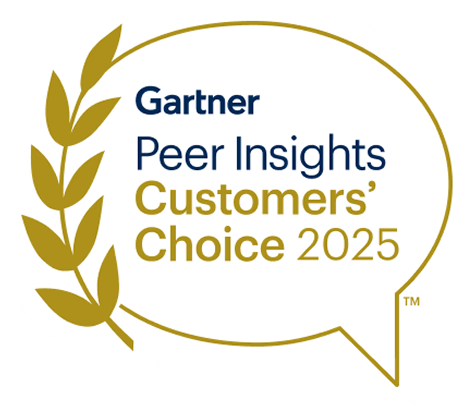Navigating the SEC's New Cybersecurity and Incident Disclosure Rules
Recently, the U.S Securities and Exchange Commission (SEC) had adopted stringent cybersecurity and incident disclosure rules, placing a heightened emphasis on the imperative need for robust incident detection, analysis, and reporting processes.
Following these new rules, public companies are finding themselves under a microscope, obligated to promptly disclose any cybersecurity incident deemed material. This disclosure mandates a detailed account of the incident's nature, scope, and timing within a stringent 4-business-day window. In essence, companies are now required to offer swift detection, thorough analysis, and the delivery of a comprehensive report on the potential impact of a data breach for shareholders and investors.
SEC's Decisive Actions in 2023: A Wake-Up Call for CISOs
The SEC's resolute stance on cybersecurity became clear with two major actions in the latter half of 2023. In July, the SEC implemented rules, effective December 18, mandating the disclosure of "material" threat/breach incidents within a four-day window. Simultaneously, annual reporting on cybersecurity risk management, strategy, and governance became a new norm. These actions underscore the SEC's commitment to getting tough on cybersecurity, prompting Chief Information Security Officers (CISOs) and their teams to broaden their focus to the boardroom. The evolving threat landscape now demands a business-centric approach, aligning cybersecurity concerns with overarching organizational strategies.
Adding weight to the SEC's commitment, in October, SolarWinds Corporation and its CISO, Timothy G. Brown was charged with fraud and internal control failures relating to allegedly known cybersecurity risks and vulnerabilities. This marked a historic moment, as it was the first time the SEC brought cybersecurity enforcement claims against an individual. SolarWinds' case, where the company disclosed only "generic and hypothetical risks" while facing specific security issues, serves as a stark reminder of the SEC's intolerance towards non-disclosure and intentional fraud in the cybersecurity domain. It's evident that the SEC's cybersecurity mandates are reshaping compliance norms.
This blog will delve into the intricacies of these rules, their implications, and how organizations, led by their CISOs, can proactively meet the SEC's expectations.
Implications for Compliance Professionals
Striking the Balance: Over-Reporting vs. Under-Reporting
Compliance professionals must navigate the fine line between over-reporting and under-reporting, a task akin to a high-stakes tightrope walk.
Over-Reporting: The consequences of hyper-vigilance can't be underestimated. Reporting every incident, regardless of its material impact, might instigate unwarranted panic in the market. This overreaction could lead to a domino effect, causing a downturn in stock prices and inflicting reputational damage.
Under-Reporting: On the flip side, failing to report within the prescribed time frame has its own set of perils. Regulatory penalties loom large, and the erosion of investor trust becomes an imminent risk. The SEC's strict adherence to disclosure timelines emphasizes the need for precision and timeliness in reporting.
Market Perception
Shareholder & Investor Trust: Balancing reporting accuracy is crucial for maintaining shareholder and investor trust. Over-reporting may breed skepticism and lead to potential divestment, while delayed reporting can erode trust and raise questions about the organization's cybersecurity commitment.
Regulatory Compliance: The SEC mandates timely and accurate reporting. Failure to comply incurs penalties, impacting both finances and the organization's regulatory standing. Regulatory actions, combined with market fallout, can significantly affect the long-term reputation of the organization.
Strategies for Success
The Day Before - Minimize the Impact of the Data Breach
To effectively minimize the impact of a data breach, the first and most critical step is understanding where your sensitive data resides. By identifying, mapping, and properly classifying this data within your environment, you establish the foundation for strong protection and informed risk mitigation.
Data Security Posture Management (DSPM) solutions strengthen this foundation by providing continuous visibility, analysis, and reinforcement of your data security posture. With DSPM, organizations can confidently safeguard sensitive information in the face of evolving threats by enabling the ability to:
- Discovers any piece of data you have and classifies the different data types in your organization.
- Automatically detects the risks of your sensitive data (including data movement) and remediation.
- Aligns your data protection practices with security regulations and best practices. Incorporates compliance measures for handling personally identifiable information (PII), protected health information (PHI), credentials, and other sensitive data.
From encryption to access controls, adopting a comprehensive security approach safeguards your organization against potential breaches. It’s crucial to conduct a thorough risk assessment to measure vulnerabilities and potential threats to your data. Understanding the risks allows for targeted and proactive risk management strategies.

The Day After: Maximizing the Pace to Handle the Impact (reputation, money, recovery, etc)
In the aftermath of a breach, having a “Data Catalog” with data sensitivity ranking helps with understanding the materiality of the breach and quick resolution and reporting within the 4-day window.
Swift incident response is also paramount; and this can be accomplished by establishing a rapid plan for mitigating the impact on reputation, finances, and overall recovery. This is where the data catalog comes into play again, by helping you understand which data was extracted, facilitating quick and accurate resolution. The next step for the ‘day after’ is actively managing your organization's reputation post-incident through transparent communication and decisive action, which contributes to trust and credibility rebuilding.

Finally, always conduct a comprehensive post-incident analysis for valuable insights, and enhance future security measures through a continuous improvement cycle. Building resilience into your cybersecurity framework by proactively adapting and fortifying defenses, best positions your organization to withstand future challenges. Adhering to these strategies enables organizations to navigate the cybersecurity landscape effectively, minimizing risks, ensuring compliance, and enhancing their ability to respond swiftly to potential incidents.
Empowering Compliance in the Face of SEC Regulations with Sentra’s DSPM
Sentra’s DSPM solution both discovers and classifies sensitive data, and aligns seamlessly with SEC's cybersecurity and incident disclosure rules. The real-time monitoring swiftly identifies potential breaches, offering a critical head start within the 4-day disclosure window.
Efficient impact analysis enables compliance professionals to gauge materiality and consequences for shareholders during reporting. Sentra's DSPM streamlines incident analysis processes, adapting to each organization's needs. Having a "Data Catalog" aids in understanding breach materiality for quick resolution and reporting, while detailed reports ensure SEC compliance.
By integrating Sentra, organizations meet regulatory demands, fortify data security, and navigate evolving compliance requirements. As the SEC shapes the cybersecurity landscape, Sentra guides towards a future where proactive incident management is a strategic imperative.
To learn more, schedule a demo with one of our experts.
<blogcta-big>










.webp)



